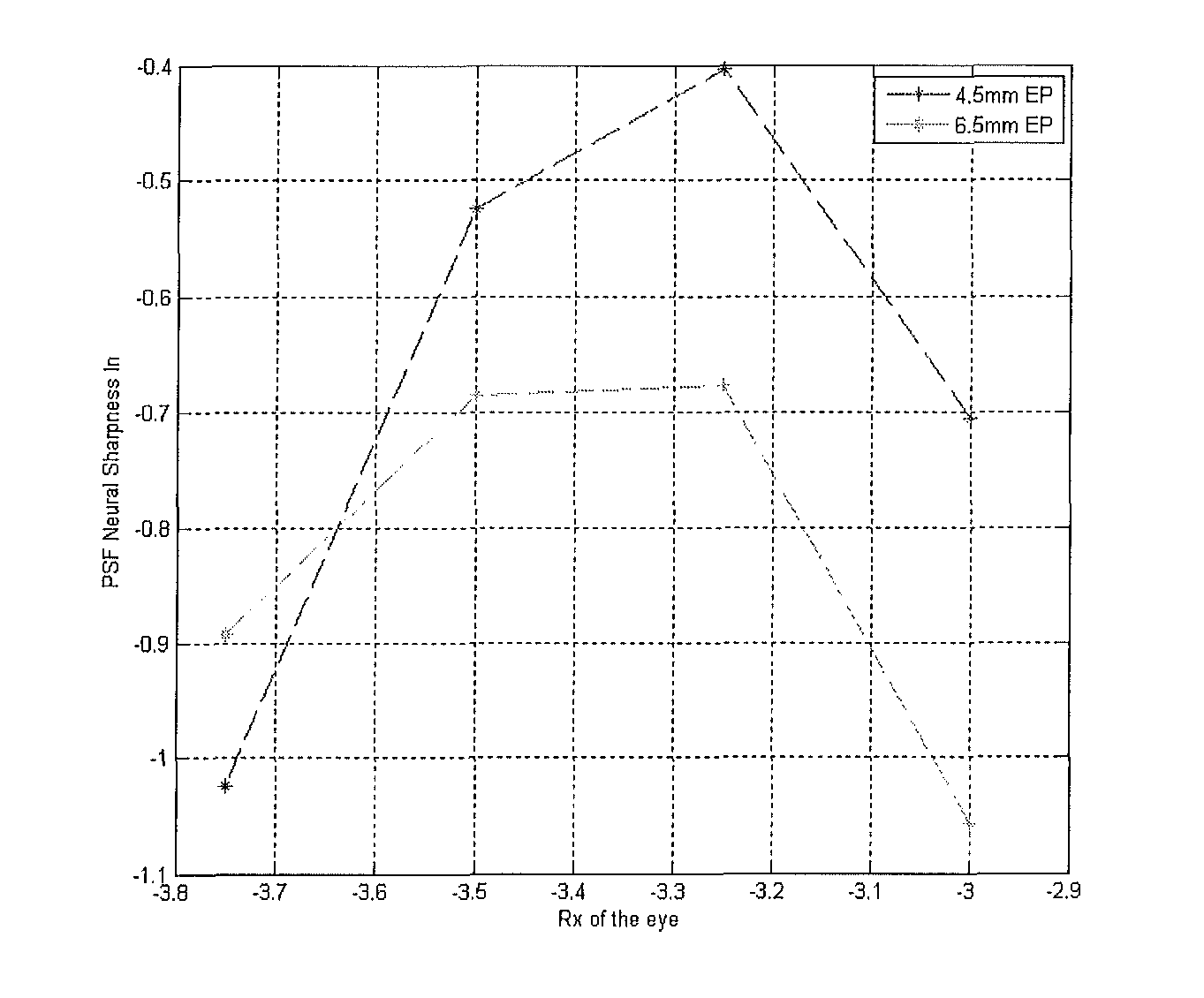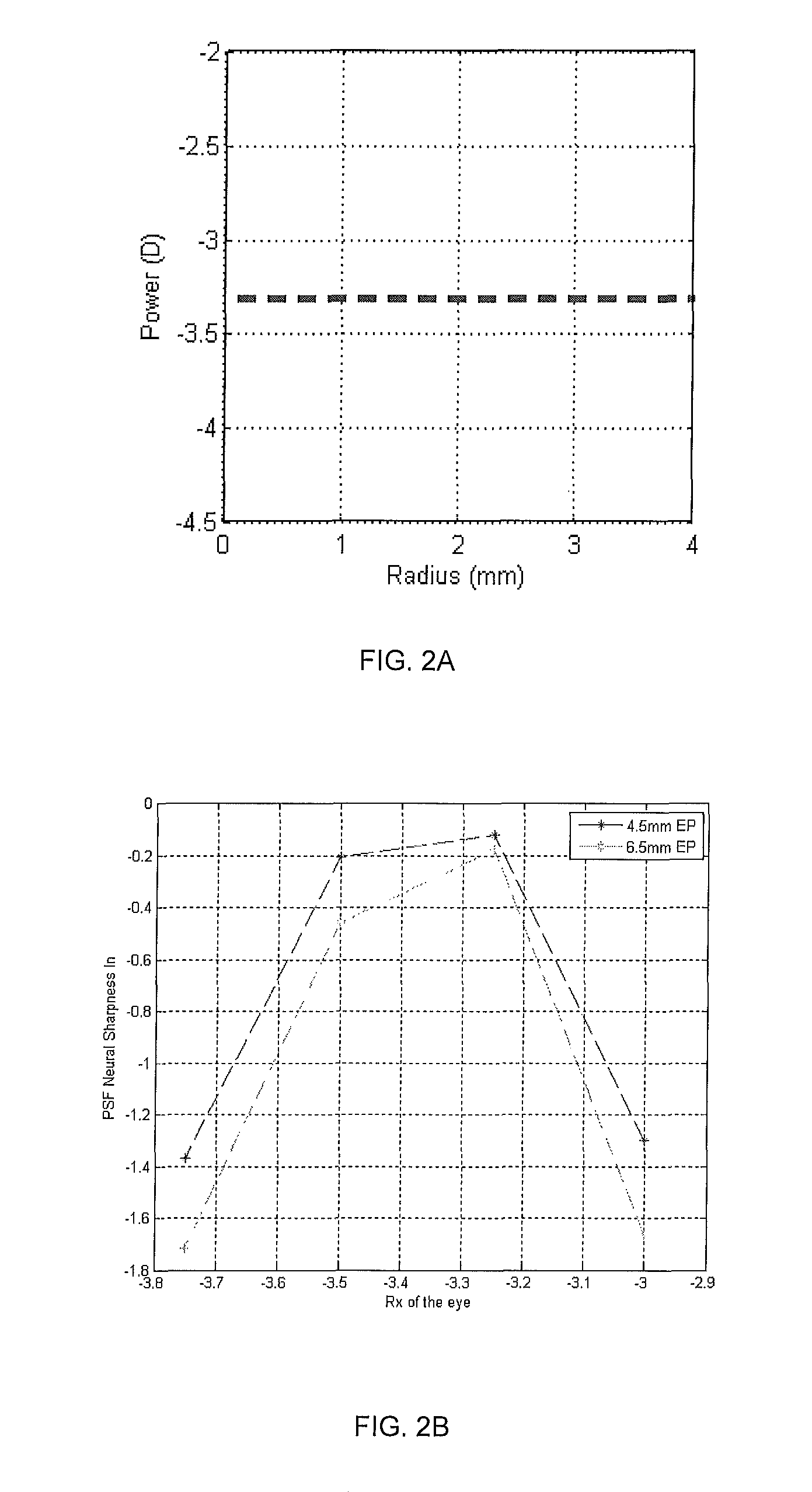Lens design and method for minimizing visual acuity variation experienced by myopia progressors
a technology of myopia progressor and lens design, applied in the field of ophthalmic lenses, can solve the problems of hyperopia, eye growth too long, and eye growth not long enough
- Summary
- Abstract
- Description
- Claims
- Application Information
AI Technical Summary
Benefits of technology
Problems solved by technology
Method used
Image
Examples
Embodiment Construction
[0029]Myopes usually progress toward more severe myopia over the course of time. According to the present invention, lens designs are provided having a center and at least one peripheral zone surrounding the center and having a different dioptric power than at the center. The lens designs may have variety of power profiles including, but not limited to, spherical lenses, lenses having spherical aberration, multifocal lenses, freeform lenses, segmented freeform lenses, and the like. According to the present invention, the power profiles minimize changes in visual acuity variation, as measured by neural sharpness, over a specific period of time at a defined myopia progression rate.
[0030]According to the present invention, a myopia progression rate may be selected based at least one factor such as gender, age, ethnicity, family history, or any combination thereof. In specific embodiments, the myopia progression rate may range from about −0.25 D / year to about −0.75 D / year. Prevalence, i...
PUM
 Login to View More
Login to View More Abstract
Description
Claims
Application Information
 Login to View More
Login to View More - R&D
- Intellectual Property
- Life Sciences
- Materials
- Tech Scout
- Unparalleled Data Quality
- Higher Quality Content
- 60% Fewer Hallucinations
Browse by: Latest US Patents, China's latest patents, Technical Efficacy Thesaurus, Application Domain, Technology Topic, Popular Technical Reports.
© 2025 PatSnap. All rights reserved.Legal|Privacy policy|Modern Slavery Act Transparency Statement|Sitemap|About US| Contact US: help@patsnap.com



